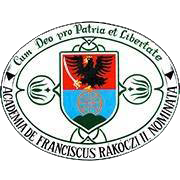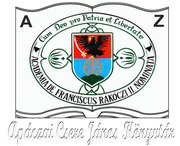Будь ласка, використовуйте цей ідентифікатор, щоб цитувати або посилатися на цей матеріал:
https://dspace.kmf.uz.ua/jspui/handle/123456789/4664| Назва: | Cognitive-Assessment Content of Zoomorphic Metaphors in Contemporary Ukrainian and English Language Culture a Comparative Aspect |
| Автори: | Larysa Kravets Лариса Кравець Kravec Larissza Galyna Siuta Tetiana Semashko Тетяна Семашко Nadiia Bobukh |
| Ключові слова: | Ukrainian linguoculture;zoomorphic metaphor;poetic text;publicists text;metaphor types |
| Дата публікації: | 2023 |
| Видавництво: | Sciedu Press |
| Вид документа: | dc.type.researchStudy |
| Бібліографічний опис: | In World Journal of English Language. 2023. Volume 13., No 6. pp. 439-448. |
| Серія/номер: | ;Volume 13., No 6. |
| Короткий огляд (реферат): | Abstract. The academic paper highlights the results of studying zoomorphic metaphors of modern Ukrainian linguoculture. Poetic texts of the ХХ - ХХІ centuries were primarily the source base because the language of poetry is the natural medium of metaphor. In poetry, the potential of metaphor is fully implemented. It conveys numerous shades of meaning, and semantic nuances, as well as the purpose of influencing the reader, stimulating his creative imagination, giving aesthetic pleasure, expanding the worldview, involving in co-creation, etc. Publicistic texts containing zoomorphic metaphors were also included in the analysis. The purpose of the research was to identify the principal types of zoomorphic metaphors and to find out the features of their semantics and functions in the language of modern Ukrainian poetry and journalism. It has been established that in the Ukrainian linguoculture, the basic donor zones of zoomorphic metaphors are the concepts of animals, birds, domestic animals, reptiles, and insects. A separate donor zone in Ukrainian linguoculture is the wing concept. Based on these donor zones, the types of zoomorphic metaphors were determined. Most zoomorphic metaphors recorded in Ukrainian poetry and journalism are traditional in their form using and implemented content. They have a distinct ethnocultural color and are connected with mythology. The rest of the metaphors are individually and authorial, arising based on the similarity of the compared concepts. All zoomorphic metaphors are divided into three groups according to the presence of an additional evaluative value: metaphors with a positive emotional and evaluative value, metaphors with a negative emotional and evaluative value, and metaphors with a neutral value. Metaphors of positive evaluation are noticeably predominant in Ukrainian poetry. They create specific sensory images of nature and objects and characterize a person and his mental state. The research proved that zoomorphic metaphors are frequently employed in the English language to convey figurative meanings by likening human characteristics or actions to those of animals. These metaphors utilize the traits, behaviors, or physical attributes of diverse animals to enrich the description or comprehension of a specific subject. It was acknowledged that the prevalence and characteristics of zoomorphic metaphors in the English language may diverge from those observed in Ukrainian linguoculture. The particular attributes, cultural associations, and symbolic interpretations assigned to various animals can vary across different languages and cultures. |
| URI (Уніфікований ідентифікатор ресурсу): | https://dspace.kmf.uz.ua/jspui/handle/123456789/4664 |
| ISSN: | 1925-0703(Print) 1925-0711(Online) |
| metadata.dc.rights.uri: | http://creativecommons.org/licenses/by-nc-nd/3.0/us/ |
| Розташовується у зібраннях: | Kravec Larissza |
Файли цього матеріалу:
| Файл | Опис | Розмір | Формат | |
|---|---|---|---|---|
| Kravets_L_Cognitive_Assessment_Content_2023.pdf | In World Journal of English Language. 2023. Volume 13., No 6. pp. 439-448. | 222.75 kB | Adobe PDF | Переглянути/Відкрити |
Ліцензія на матеріал: Ліцензія Creative Commons





